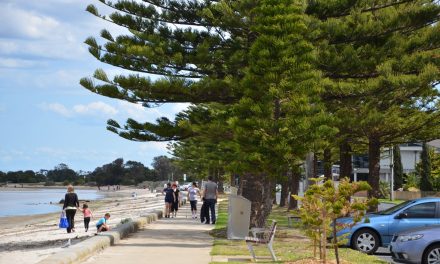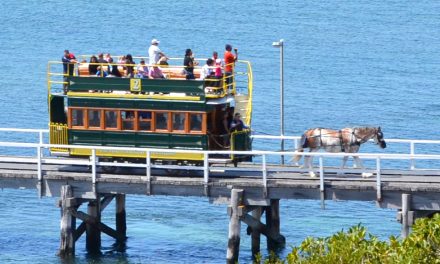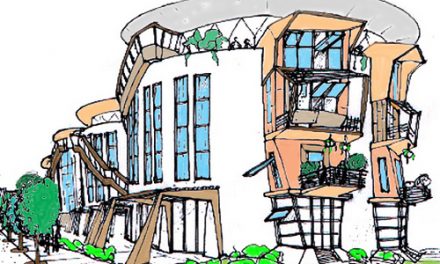The washing ashore and buildup of seaweed on Altona Beach has been a recurrent problem, due to factors such as a rim of seagrass meadows along its shoreline, seasonal algae growth, mass water movement, rain leaching excess nutrients into the bay, weather and light conditions.
It costs Hobsons Bay Council about $300,000 annually or $61.33 a tonne (as at 2010) to remove the seaweed. The seaweeds are left on the beach to dry, during which it emits an unpleasant odour, before being collected by trucks and taken to Wyndham tip about 3 times a week. Over the last 5 years, an average 4,500 tonnes of seaweed has been collected annually. With tipping fees scheduled to rise sharply, the council needs to find another more sustainable alternative.
The consultancy firm GHD, commissioned by the Council and funded by the Department of Sustainability and Environment in 2009, proposed 4 options to remove the seaweed. These 4 options are shown according to the order of preference in the following table.
| Option | Cost | Method |
| 1 | $1.19m over 10 years + No dumping fees | Pump seaweed from the water and transport it offshore via a barge to a vessel where it can be converted into liquid fertiliser. |
| 2 | $750,000 + Dumping fees | Pump seaweed into an industrial waste bin, which would filter the weed and send water back into the bay. |
| 3 | $1.6m over 10 years + Dumping fees | Uses the Hurricane Cargo Hovercraft, which can travel on sand and water, to rake washed-up seaweed back into the shallows, vacuum it through a filter and empty the seaweed on the beach for removal to a tip or organic recycling plant. |
| 4 | $4.9m + Dumping fees | Employs workers to manually collect the seaweed. |
The Council eventually decided to trial the first option for 12 months. After putting out a tender, the Council awarded the contract to a Laverton North biotechnology company Cassa Bio-Tec, at a cost of $44 per tonne of seaweed or about $176,000 for the 12 month period. Cassa Bio-Tec had previous success of using enzymes to catch and digest Northern Pacific Seastar into liquid fertilizer. This is a starfish that feeds on mussels, scallops and other marine animals and plants, resulting in a 40% decline in fish stocks in Port Phillip Bay.
Cassa Bio-Tec will carry out the following:
- Collect the seaweed using a vacuum pump mounted on a shallow draft barge.
- Separate it from seagrass, which goes into stock feed.
- Wash it with recycled water to remove sand, which is then returned to the sea.
- Convert the seaweed into nutrient-rich liquid fertiliser (containing magnesium, selenium and boron) using its own formula of natural biodegradable enzyme. One tonne of seaweed produces roughly two tonnes of liquid fertiliser.
All sound good and promising. But the results did not turn out as intended after a few months of trial. The high content of sand in the material being collected greatly reduces the efficiency of recycling the seaweed. This has resulted in many tonnes of seaweed being sent to landfill, costing the Council about $74 per tonne.
Cassa Bio-Tec suggested the Council look at getting a Trommel, a machine that helps to separate the sand from the seaweed during the collection process and make the seaweed easier to recycle. The State Government had decided to contribute $43,780 to the purchase of the machine, which is made by a Queensland company. The council will pay the remaining half of the cost. Trommel is expected to save about $83,000 a year that the Council now spends on seaweed disposal.
The Council collected 1286 tonnes of seaweed in 2009-2010, 3389 tonnes less than the previous financial year. Melbourne University marine biologist Dr Gerald Kraft said the massive reduction in seaweed along Altona Beach as well as in other parts of Victoria could be due to a huge population explosion of sea urchins, which feed on seaweeds, thereby reducing their presence dramatically. I think the use of biological control could be another complementary option worth investigating, if this does not adversely affect the marine ecosystem.
Reference
- Seaweed to be wiped from beaches
- Funding help for seaweed machine
- Uses for weed waste
- Weed of woe
- Hovercraft plan to vacuum stinking seaweed from Altona beach
- Altona finds seaweed solution
- From pest to fertiliser
- Separating seaweed from sand
- Seaweed on the decline




